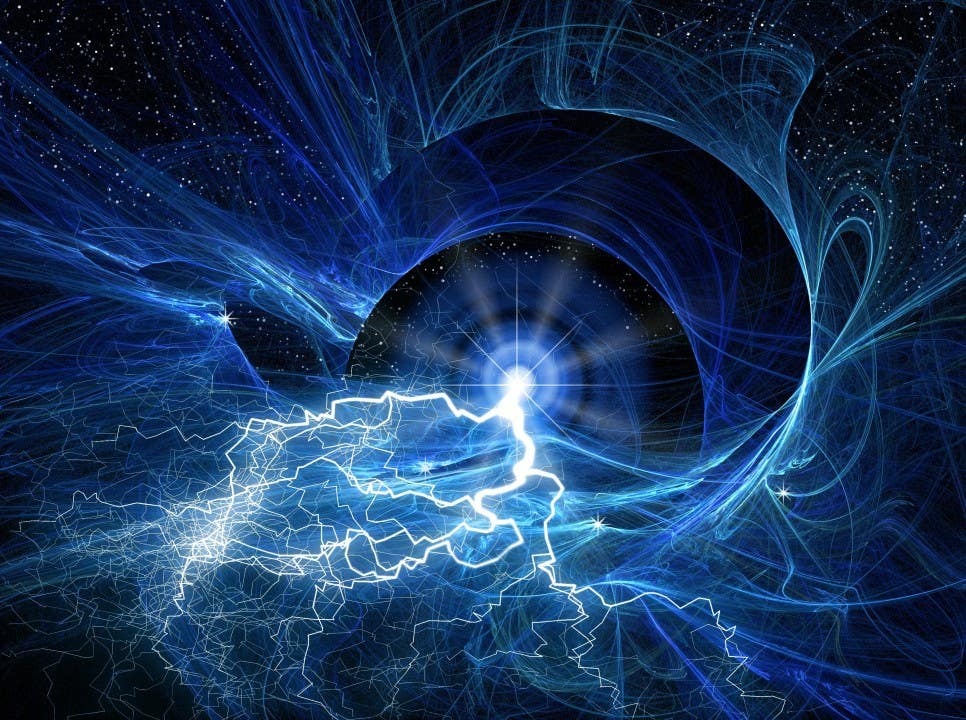New tachyon study could unlock the secrets of time travel and reality
The study proposes a new approach where tachyons not only exist within relativity but could theoretically travel through time.

Though no one has ever observed one, tachyons remain a popular subject in theoretical physics, sparking endless debate and imaginative speculation. (CREDIT: CC BY-SA 4.0)
The idea of a particle that races faster than light has long fascinated physicists. Known as the tachyon, it was originally dreamed up to help untangle paradoxes in quantum theory and relativity. Though no one has ever observed one, tachyons remain a popular subject in theoretical physics, sparking endless debate and imaginative speculation.
Now, a recent study by a global team of researchers has stirred fresh excitement. Their findings were published in the scientific journal arXiv. They argue that tachyons could, in fact, exist within Einstein’s own special theory of relativity. That bold claim upends basic assumptions about time and causality, prompting deep questions about how the universe works. If true, it might force physicists to rethink the very rules that govern space and motion.
Exploring the Theoretical Origins of the Tachyon
Back in 1962, physicist Gerald Feinberg was the first to give serious shape to the idea. He suggested that particles with something called “imaginary mass” could move faster than light without ever dipping below that speed. Imaginary mass involves taking the square root of a negative number—strange, yes, but mathematically valid within certain equations.


Feinberg’s theory cleverly sidestepped a major issue in Einstein’s work. According to relativity, anything with mass needs infinite energy to reach the speed of light. Tachyons, thanks to their imaginary mass, would dodge this barrier entirely. This opened the door to speculation about faster-than-light signals, time travel, and even physical effects that defy everyday intuition.
Still, the excitement didn’t last long. Critics quickly pointed out a serious flaw: causality. If a particle outruns light, it could, in theory, reverse the order of cause and effect. That means an event could happen before its trigger—a logical mess that breaks the foundations of modern physics.
On top of that, deeper analysis revealed even more trouble. Many equations involving tachyons ended up spitting out infinite energy values—results that make no sense in the real world. Because of these paradoxes, most scientists treat tachyons as interesting but unreal, a quirky outcome of math rather than anything nature actually makes.
Related Stories
Additionally, theoretical models indicated that the number of observed tachyons would vary depending on the observer’s frame of reference, a contradiction to established physical laws. Despite these hurdles, tachyons continued to be studied within quantum field theory and theoretical frameworks like string theory.
A New Study: Tachyons Within Relativity
Recent research led by physicists from the University of Warsaw and the University of Oxford, including Andrzej Dragan and Artur Ekert, has introduced a framework that reconciles tachyons with Einstein’s special relativity.
Published in Physical Review D, the study challenges past assumptions and proposes a new approach where tachyons not only exist within relativity but could theoretically travel through time. According to Dragan, this framework allows superluminal particles to carry information backward in time, thereby opening new possibilities in how we understand causality.
Dragan explains, “The idea that the future can influence the present rather than the present determining the future is not new in physics. However, until now, this kind of view has been at best an unorthodox interpretation of certain quantum phenomena, and this time we were forced to this conclusion by the theory itself.”
Dragan’s explanation illustrates this with a “movie” analogy, where knowing both the beginning and the end simultaneously allows one to understand the entire plot in full—suggesting a model where future events influence current behaviors.
Resolving Tachyon Paradoxes: A New Mathematical Framework
The study by Dragan and his colleagues, including researchers Jerzy Paczos, Kacper Dębski, Szymon Cedrowski, Szymon Charzyński, and Krzysztof Turzyński, addresses some of the primary issues that made tachyons mathematically implausible.
Traditional calculations involving tachyons have resulted in unlimited energy and unstable vacuum states, and models have varied based on the observer’s perspective, challenging physical principles. To overcome these problems, the team used an extended mathematical approach, incorporating both initial and final states of the system in a way that allows tachyons to exist stably within the relativity framework.
This new framework has significant implications. By resolving issues such as infinite energy and observer dependency, the researchers created a consistent model for tachyons within special relativity. The study suggests that tachyons, long thought impossible due to mathematical paradoxes, might indeed fit into our current understanding of physics.
The Influence of Quantum Mechanics: Two-State Formalism
One of the study’s breakthroughs is in its use of two-state formalism, a concept in quantum mechanics that supports time-reversible processes. This formalism, originally proposed by physicists Aharonov, Bergmann, and Lebowitz, has typically been seen as an exotic interpretation within quantum mechanics.
However, the team applied it to their tachyon model to guarantee time-reversibility, suggesting that the processes involving tachyons could operate backward in time without violating causality. Dragan and Ekert further argue that superluminal particles, contrary to prior assumptions, do not create paradoxes but only introduce causal “disturbances” akin to those observed in quantum mechanics.
This two-state formalism provides a stable, relativistic framework that may redefine the tachyon’s place in physics. If validated, this approach could transform theories of time and quantum processes, possibly offering new explanations for complex phenomena such as how particles gain mass or how matter itself forms within the universe.
Previous Research and Experimental Constraints
Over the years, physicists have explored various theories and conducted experiments, albeit inconclusively, in search of tachyons. Notably, Sheldon Glashow and Andrew Cohen from Harvard University published a study on potential faster-than-light neutrinos, a phenomenon resembling tachyons, but later findings disproved this hypothesis. CERN's OPERA experiment also examined superluminal neutrinos, sparking brief excitement, though subsequent tests revealed measurement errors rather than new physics.
Beyond particle experiments, tachyonic fields have been studied in other theoretical contexts, including cosmology and the Casimir effect. In cosmology, tachyonic fields are theorized as potential drivers for dark energy and cosmic expansion.
Researchers like Dr. Shinji Tsujikawa from Waseda University have examined tachyonic fields to explore the accelerating universe’s mysteries. Although still speculative, this research could eventually link tachyonic fields with observable cosmological phenomena, helping scientists explain why the universe’s expansion rate appears to be increasing.
Broader Implications: Changing Our Understanding of Time and Reality
The Dragan team’s study may have far-reaching consequences. With a mathematically sound framework for tachyons, physicists now have the opportunity to explore questions around time’s nature and quantum reality more deeply. The tachyon framework could reveal hidden aspects of time symmetry and causality, possibly linking it to symmetry-breaking events, such as those theorized to explain mass in the Higgs field.
While tachyons remain hypothetical, the Dragan and Ekert study demonstrates that such particles may indeed have a place in physics, free of past contradictions. This advancement reminds us of science’s role in challenging assumptions and stretching the boundaries of what we know.
The new framework could redefine quantum theory and time’s nature, reshaping how we understand the universe at its most fundamental level.
Note: Materials provided above by The Brighter Side of News. Content may be edited for style and length.
Like these kind of feel good stories? Get The Brighter Side of News' newsletter.



